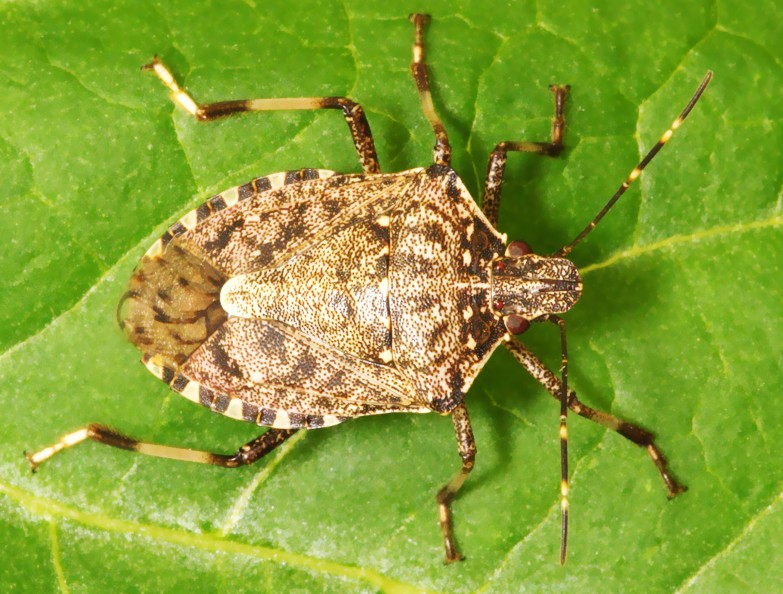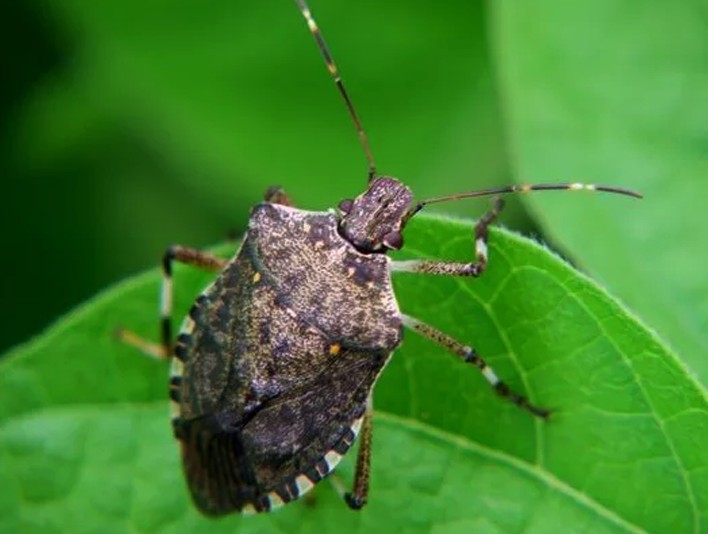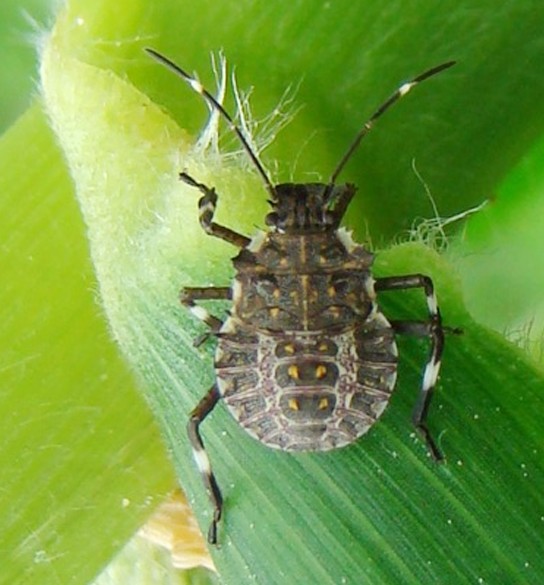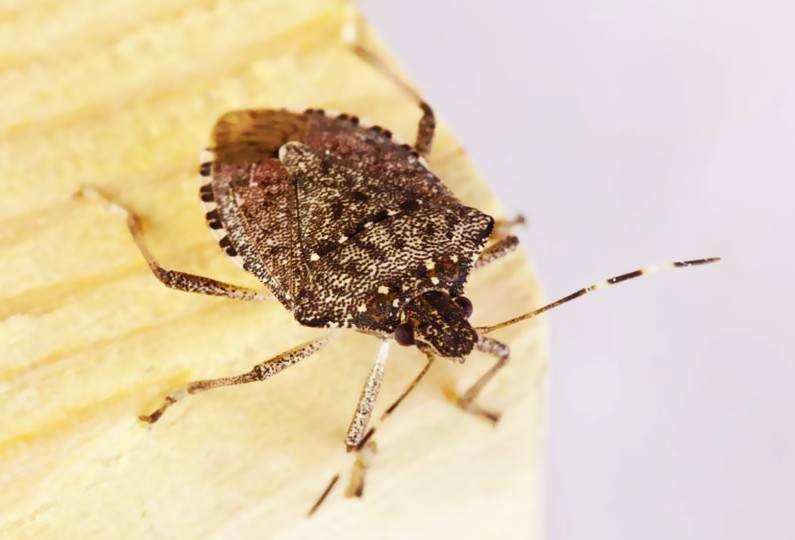Stink Bug
Introduction
Come fall, and the creepy crawlies are outside to creep you out. Amidst other insects, you must have spotted the brown marmorated stink bug. If you haven’t seen it, then chances are you have smelled its presence around you. From window screens to walls, vents, and other places in your home – stink bugs can be anywhere. Today, we will be talking about the stink bugs and discussing all about them in length.
What is a Stink bug?

Picture of a Stink bug
The brown marmorated stink bug is a small insect that grows from 0.5 inches to 0.625 inches. They are not very big in size and have a shield like covering on its back. It has a mosquito-like mouth that sucks the juices from different seed pods, plant juices, cultivated plants, and other wild plants.
The Stink Bugs were discovered in the Asia, and then they travelled all the way to North America. Both the nymphs and the adults feed itself on different types of plants, vegetables, as well as crops.
How does a Stink bug look like?

Brown marmorated stink bugs lay a cluster of eggs that are light green in color. The adult stink bugs grow up to 1.7 cm in length and have a wide back. It is covered in different kinds of shades of brown on all over its back. The undersides see a mixture of off-white, gray, copper, black, as well as blue colored markings.
They have several veins which have earned them the name marmorated. It has two antennae which are also covered in brown. The glands that have earned the stink bug its name, i.e., the stink glands are located in the thorax. It lies right between the first pair of legs and the second pair of legs.
The Behavioral patterns of a Stink bug
It is not a blood sucking or human biting insect. The marmorated brown stink bug is a lover of plants, crops, and different kinds of vegetation. It goes by the species name Halyomorpha halys. They have a proboscis to suck their food from plants.
How does a Stink bug smell?
You are wondering by now, when are we going to talk about the special feature of a stink bug. The one that sets it apart from other insects is its ability to produce a foul odor. Its name is enough to keep us wondering that how does it actually smell of. Insects produce foul scented compounds as a shield against predators. The marmorated brown stink bugs have two glands one that is located between its legs and the other is on the dorsal surface. Trans-2 decenal and Trans-2 octenal are highly responsible for the scent.
They have the potential to emit a foul and strong deterring odor as a reflex defense mechanism. Every time they feel they are about to be injured, they do it. The smell differs from species to species. The most commonly found stink bugs smell kind of like herbs, especially coriander and cilantro. This smell can stay in your house for a long period of time.
Where do the stink bugs come from?
Brown marmorated stink bugs have several types of host range. They can feed themselves on as many as 60 species of plants; this includes vegetable crops, ornamental plants, and other kinds of fruit trees.
This bug stepped foot in the United States of America from Japan. They are native to Taiwan, Japan, and China. The first marmorated brown stink bug was discovered in the state of Oregon. Majority of the states in the United States of America face the infestation of stink bugs. They prefer warm and cozy weather.
You will find them on plants, buildings, and even sidewalks. Come fall and they are in search of places where they can live in. That is the time they will enter your homes through cracks, windows, and other open spaces. The second they have selected a place to live in the fall, they call their mates.
Life cycle
These bugs come in a variety of sizes, shades, and designs. The species of a stink bug describes the kind of lifespan it will have.
Most of the stink bugs look similar to one another. The stink bugs with a shielded back and tubular mouth part is pretty easy to spot.
The eggs of a stink bug look familiar to drums, their color can vary from one species to another. When the color begins to change it means they are getting ready to hatch. The adult stink bug lays as many as thirty eggs on the underside of a leaf. When the eggs hatch, nymphs of black and red color emerge out. Throughout their lifetime a stink bug goes through five molts.
What does a stink bug like to eat?
They feed themselves on leaves, fruits, flowers, crops, vegetation, and other insects like caterpillars. The marmorated brown stink bug is of high risk to the crops and vegetation.
Stink Bug Bite
The species of a stink bug decides the size of it. Most stink bugs found in America are about 2 cm long. Even though they infest your homes, they are not capable of biting or stinging you. Their mouth though designed to suck the juices of plants is not capable of sucking the blood of humans. It lacks the sucking or piercing mechanism.
Pictures of Stink Bugs
Take a look at some of these mind blowing pictures of stink bugs:



Signs of Stink bug Infestation
When the leaves start to change their color, it is time for the stink bugs to enter your home in search of warmth and a place to live in. They enter the same way other pests do, unwelcomed and uninformed through gaps, cracks, and other small open spaces. Here are a few signs that they are in your home.
You will see them crawling around in your home. They can easily climb the furniture, curtains, and anywhere else. Anywhere they see fruits or light, they try to move towards it. If you have left your vegetables and fruits outside you are bound to attract them.
They are known for their notorious smell. If you haven’t spotted them, then you will smell them. When they face danger or feel threatened, they release a foul odor. That is another sign of their presence.
You will see their excreta. It is usually dark in color and is found on windows. You may even spot it on your kitchen and walls.
If you have any kind of plant inside your house, it will show signs of damage.
You will find their dead body. If you find a few dead bugs, it means more are there.
How to Get Rid of Stink Bugs
Now, you can’t live with a bug that discharges foul smell every now and then. It will also destroy your indoor plants, fruits, and vegetables. Moreover, it isn’t healthy to live with a marmorated brown stink bug. Here, are a few ways to deal with the marmorated brown stink bug.
Don’t give them the chance to enter your homes. After thorough investigation seal off all entry points. This will prevent them from entering. Areas behind the chimneys, utility pipes, wood fascia, other openings need to be paid special attention.
Sticky traps are readily available in the market. All you need to do is buy them from your nearby supermarket. Place these traps on windowsills because they are most likely entering from there.
You can spray them with a homemade solution. Use vinegar(120ml), dishwasher soap(60ml), and a cup of hot water. Pour all of it in a bottle and shake well. Spray it on the bugs every time you spot them. Make sure you don’t step on it after its dead, the pungent smell will be hard to deal with.
Stink Bugs love the lights. Make sure that you keep the outside porch or front light to a minimum during the autumn season. You can either turn it off or keep the curtains and blinds in your home drawn.
Don’t let the moisture to build around your home. Check for leakage or clogged drains. If there is a problem, get it fixed.
Fun Facts
Some fun facts about the stink bugs that you didn’t know:
The stink bug has a scientific name that is Nezara viridula.
- They are known to use their proboscis for feeding purposes and are known as true bugs.
- They have a foul liquid that is found in the glands around the thorax. It ejects it every time something scares it. But, this smell serves one more purpose and it attracts mates from reproduction.
- Around 200 species of stink bugs are found in the United States of America alone. Entomologists have identified as many as 4700 species of it which are divided into 900 kinds of genre.
Your lesson about stink bugs is now complete. You know everything about them to keep them away from your home.
